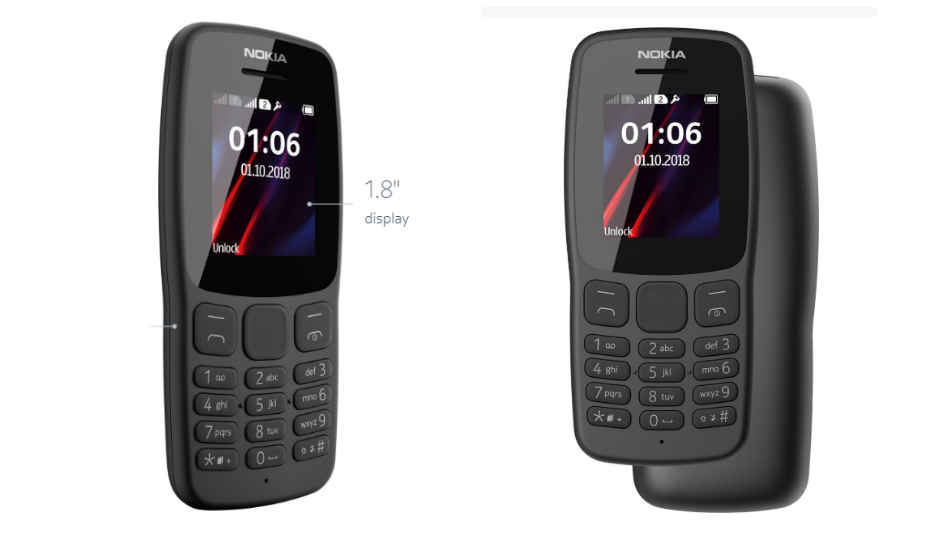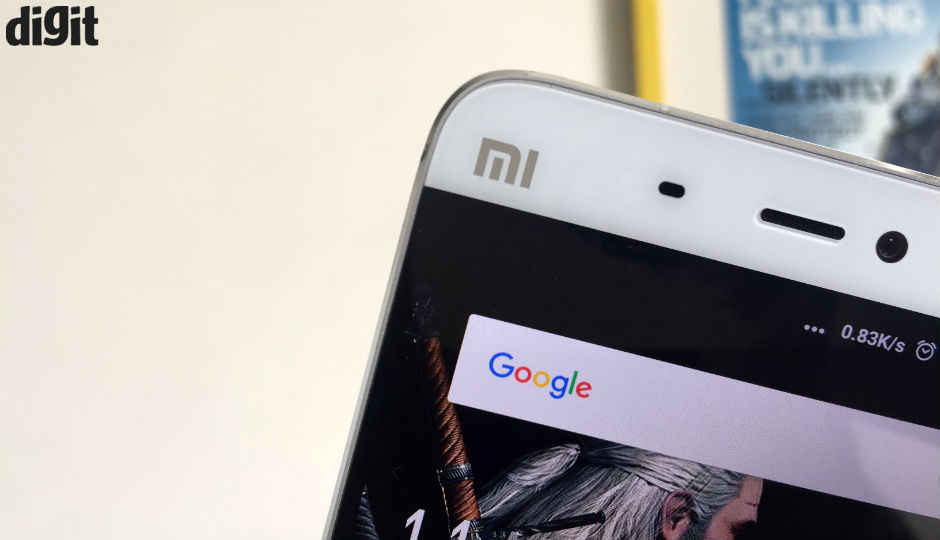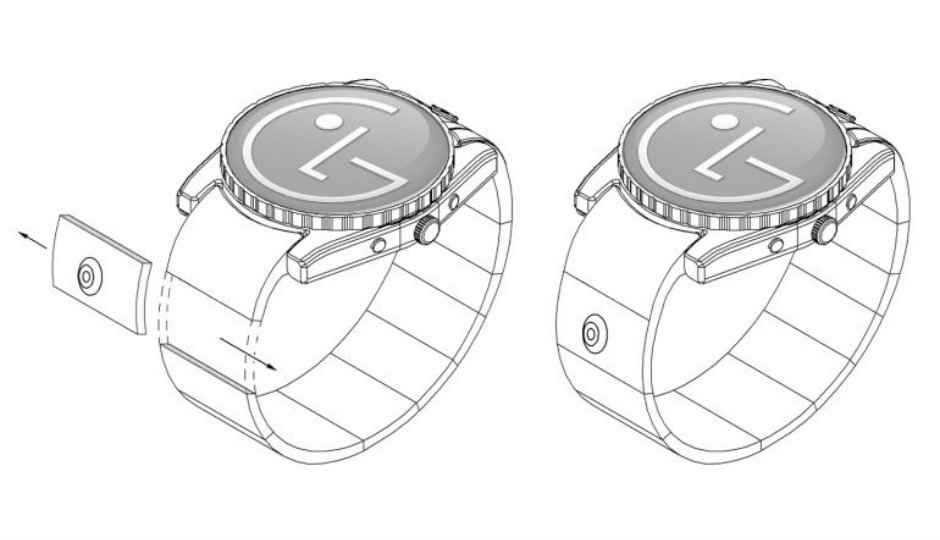 The Asus Zenfone Max Pro M1 was launched in India last year in April, while its 6GB variant introduced in the month of July. The price cut down has been done by the company because of the launch of its successor Max Pro M2, which is now available via open sale across India. The Asus Zenfone Max Pro M1 is now starting at Rs 9,999 for the base variant 3GB/32GB. Its 4GB/64GB variant is available for Rs 11,999, while the higher end 6GB/128GB model is priced at Rs 13,999. The smartphone is exclusively available on Flipkart. Asus Zenfone Max Pro M1 specifications The Asus Zenfone Max Pro M1 is powered by a Qualcomm Snapdragon 660 processor, which is clocked at 1.8GHz. The smartphone is available in three storage models 3GB/32GB, 4GB/64GB and 6GB/128GB. The internal storage of the device is also expandable via a microSD card to up to 2TB. The phone sports a 5.99-inch full HD+ display that offers a resolution of 1080 x 2160 pixels. It has an aspect ratio of 18:9. Coming to the cameras, the 3GB/32GB and 4GB/64GB variants come with a dual 13MP + 5MP camera set up at the back along with an 8MP selfie camera. On the other hand, the 6GB variant of the device has a dual 16MP + 5MP rear cameras with a 16MP sensor on the front. The device is backed by a 5,000mAh battery that does not support fast charging. You can purchase the device online via Flipkart. The Asus Zenfone Max Pro M1 3GB variant is now starting from Rs 9,999 down from its early price of Rs 10,999. You can get the 4GB RAM model for Rs 11,999, while the 6GB variant is now available in India for Rs 13,999
The Asus Zenfone Max Pro M1 was launched in India last year in April, while its 6GB variant introduced in the month of July. The price cut down has been done by the company because of the launch of its successor Max Pro M2, which is now available via open sale across India. The Asus Zenfone Max Pro M1 is now starting at Rs 9,999 for the base variant 3GB/32GB. Its 4GB/64GB variant is available for Rs 11,999, while the higher end 6GB/128GB model is priced at Rs 13,999. The smartphone is exclusively available on Flipkart. Asus Zenfone Max Pro M1 specifications The Asus Zenfone Max Pro M1 is powered by a Qualcomm Snapdragon 660 processor, which is clocked at 1.8GHz. The smartphone is available in three storage models 3GB/32GB, 4GB/64GB and 6GB/128GB. The internal storage of the device is also expandable via a microSD card to up to 2TB. The phone sports a 5.99-inch full HD+ display that offers a resolution of 1080 x 2160 pixels. It has an aspect ratio of 18:9. Coming to the cameras, the 3GB/32GB and 4GB/64GB variants come with a dual 13MP + 5MP camera set up at the back along with an 8MP selfie camera. On the other hand, the 6GB variant of the device has a dual 16MP + 5MP rear cameras with a 16MP sensor on the front. The device is backed by a 5,000mAh battery that does not support fast charging. You can purchase the device online via Flipkart. The Asus Zenfone Max Pro M1 3GB variant is now starting from Rs 9,999 down from its early price of Rs 10,999. You can get the 4GB RAM model for Rs 11,999, while the 6GB variant is now available in India for Rs 13,999from Latest Technology News http://bit.ly/2R2TFqQ
 Highlights: Govt looking to penalise apps and websites spreading fake news. Platforms like WhatsApp, Facebook, Google, Twitter could be in trouble. Govt also looking to shut off public access to apps and websites that can't control fake news. Fake News has been a big problem since the past two years and with each passing year, more and more fake stories are being circulated on the web through popular social media platforms. Last year, tech companies like Facebook and Google each deployed various AI and machine learning-based mechanisms to combat the spread of fake news on their platforms. WhatsApp also introduced forwarded labels on the platform and started a bunch of public awareness campaigns to stop the spread of fake news on the messaging app. However, all these efforts have not been able to completely sift out fake news from the social media ecosystem. Taking a hard stand against the problems of fake news and child pornography, the Indian government is reportedly planning to amend IT laws in the country to shut down any app or website responsible for spreading false stories or child pornography. Times of India reports that the amendments in the IT Act sought by the centre asks for provisions to both penalise and take down apps and websites that are unable to control fake news and child porn. “We need accountability and power to heavily penalise the companies in case of violations, or refusal to cooperate,” a senior govt spokesperson told TOI. The impact of this amendment could see WhatsApp, Facebook, Google, Snapchat, Telegram and Twitter face some tough penalties in India. The news comes just weeks after the Ministry of Home Affairs invoked Section 69(1) of the Information Technology Act to order 10 central agencies to monitor, intercept and decrypt information generated, transmitted or stored in any computer in India. The central agencies ordered to monitor computer data include the Intelligence Bureau, Narcotics Control Bureau, Enforcement Directorate, Central Board of Direct Taxes, Directorate of Revenue Intelligence, Central Bureau of Investigation, National Investigation Agency, R&AW, Directorate of Signal Intelligence (in J&K, North-East, Assam) and Commissioner of Police, Delhi. Related Read: The evolution of fake news
Highlights: Govt looking to penalise apps and websites spreading fake news. Platforms like WhatsApp, Facebook, Google, Twitter could be in trouble. Govt also looking to shut off public access to apps and websites that can't control fake news. Fake News has been a big problem since the past two years and with each passing year, more and more fake stories are being circulated on the web through popular social media platforms. Last year, tech companies like Facebook and Google each deployed various AI and machine learning-based mechanisms to combat the spread of fake news on their platforms. WhatsApp also introduced forwarded labels on the platform and started a bunch of public awareness campaigns to stop the spread of fake news on the messaging app. However, all these efforts have not been able to completely sift out fake news from the social media ecosystem. Taking a hard stand against the problems of fake news and child pornography, the Indian government is reportedly planning to amend IT laws in the country to shut down any app or website responsible for spreading false stories or child pornography. Times of India reports that the amendments in the IT Act sought by the centre asks for provisions to both penalise and take down apps and websites that are unable to control fake news and child porn. “We need accountability and power to heavily penalise the companies in case of violations, or refusal to cooperate,” a senior govt spokesperson told TOI. The impact of this amendment could see WhatsApp, Facebook, Google, Snapchat, Telegram and Twitter face some tough penalties in India. The news comes just weeks after the Ministry of Home Affairs invoked Section 69(1) of the Information Technology Act to order 10 central agencies to monitor, intercept and decrypt information generated, transmitted or stored in any computer in India. The central agencies ordered to monitor computer data include the Intelligence Bureau, Narcotics Control Bureau, Enforcement Directorate, Central Board of Direct Taxes, Directorate of Revenue Intelligence, Central Bureau of Investigation, National Investigation Agency, R&AW, Directorate of Signal Intelligence (in J&K, North-East, Assam) and Commissioner of Police, Delhi. Related Read: The evolution of fake news Highlights: China's lunar probe Chang'e-4 has landed on the far side of the moon Chang'e-4 is the first space probe ever to land on this unexplored side of the moon Communication with the probe happens with the help of relay satellite Queqiao It’s a historic day in the world of space exploration for us all. China’s lunar probe, Chang’e-4, has landed safely on the dark side of the moon, a side that has been until today completely unexplored by humanity. China Xinhua News tweeted the first images of the lunar surface released by the China National Space Administration. In the images, we can see the lunar probe’s landing site right after it completed descent at 7:56 AM IST (10:26 AM Beijing time). The first images of the far the side of the moon were sent back by Chang’e-4 with the help of Queqiao, a relay satellite that was put in place by the China National Space Administration back in May 2018. Queqiao is an essential element in Chang’e-4’s mission because direct communication with the far side of the moon is not possible. As part of the mission there are two more microsatellites, Longjiang-1 and Longjiang-2, which make relayed communications possible. Chang’e-4 has landed at the planned landing site of Von Kármán, a 180-kilometre-wide crater in the South Pole-Aitken Basin. Chang’e-4’s payload includes a lander, which consists of a landing camera (LCAM), a terrain camera (TCAM), and a low-frequency spectrometre (LFS) among other equipment. The payload also includes a rover, which contains a panoramic camera (PCAM) and a lunar penetrating radar (LPR) among other equipment. The lander is also carrying a sealed 3-kilogramme-heavy “biosphere”, which consists of seeds and insect larvae to test whether they will hatch and grow together in synergy. Chang’e-4 is on the far side of the moon for a reason; its mission includes measuring lunar surface temperature over the course of its mission, measuring chemical compositions of lunar rocks and soils, carrying out low-frequency radio astronomical observation and research, studying cosmic rays, and observing solar corona. Chang’e-4 was launched from the Xichang Satellite Launch Center in Sichuan on a Long March-3B rocket on December 7. Good luck out there, little rover. Inline images courtesy: China National Space Administration Cover image courtesy: AP Related Read: China to land on the dark side of the moon: Report
Highlights: China's lunar probe Chang'e-4 has landed on the far side of the moon Chang'e-4 is the first space probe ever to land on this unexplored side of the moon Communication with the probe happens with the help of relay satellite Queqiao It’s a historic day in the world of space exploration for us all. China’s lunar probe, Chang’e-4, has landed safely on the dark side of the moon, a side that has been until today completely unexplored by humanity. China Xinhua News tweeted the first images of the lunar surface released by the China National Space Administration. In the images, we can see the lunar probe’s landing site right after it completed descent at 7:56 AM IST (10:26 AM Beijing time). The first images of the far the side of the moon were sent back by Chang’e-4 with the help of Queqiao, a relay satellite that was put in place by the China National Space Administration back in May 2018. Queqiao is an essential element in Chang’e-4’s mission because direct communication with the far side of the moon is not possible. As part of the mission there are two more microsatellites, Longjiang-1 and Longjiang-2, which make relayed communications possible. Chang’e-4 has landed at the planned landing site of Von Kármán, a 180-kilometre-wide crater in the South Pole-Aitken Basin. Chang’e-4’s payload includes a lander, which consists of a landing camera (LCAM), a terrain camera (TCAM), and a low-frequency spectrometre (LFS) among other equipment. The payload also includes a rover, which contains a panoramic camera (PCAM) and a lunar penetrating radar (LPR) among other equipment. The lander is also carrying a sealed 3-kilogramme-heavy “biosphere”, which consists of seeds and insect larvae to test whether they will hatch and grow together in synergy. Chang’e-4 is on the far side of the moon for a reason; its mission includes measuring lunar surface temperature over the course of its mission, measuring chemical compositions of lunar rocks and soils, carrying out low-frequency radio astronomical observation and research, studying cosmic rays, and observing solar corona. Chang’e-4 was launched from the Xichang Satellite Launch Center in Sichuan on a Long March-3B rocket on December 7. Good luck out there, little rover. Inline images courtesy: China National Space Administration Cover image courtesy: AP Related Read: China to land on the dark side of the moon: Report Highlights: Nokia 106 feature phone has been launched at Rs 1,299 The phone offers up to 15.7 hours talk time and up to 21 days standby time It comes with the classic Snake Xenzia game Expanding its feature phone portfolio, HMD Global, the Finnish company that sells Nokia branded phones, has launched the Nokia 106 at a price of Rs 1,299. The device features a battery that is claimed to deliver up to 15.7 hours talk time and up to 21 days standby time. The Nokia 106 comes in dark grey and is available across top mobile retailers in the country as well as on Nokia.com. “India is an important feature phone market. Consumers here seek outstanding battery life, a simple to use interface, and great durability from a trusted brand like Nokia. Nokia phones are synonymous with these qualities and we’re delighted to introduce the Nokia 106 to our feature phone portfolio and hope to continue to drive connectivity for millions of consumers here,” Ajey Mehta, Vice President and Country Head – India, HMD Global, said in a statement. The Nokia 106 feature phone has a bar-design and is made up of a polycarbonate body. The company says that it has carefully considered spacing between each button on the keymat so that it makes it easy to dial and text. The phone also features the Snake Xenzia game and the phonebook can store up to 2000 contacts. The phone has a LED torch, in-built FM radio and it can store up to 500 messages. In October, HMD Global has launched the Nokia 8110 4G, which also known as the ‘Banana Phone’ in India. The phone comes with apps like Google Assistant, Google Maps and Google Search. It also has Facebook, Twitter and other social media apps which can be downloaded from its app store. The phone runs KaiOS - the only other phones that run Kai OS in India are the JioPhone and JioPhone 2. Related Read: HMD Global launches Nokia 8110 4G in India Nokia 8.1 with PureView HDR10 display launched in India
Highlights: Nokia 106 feature phone has been launched at Rs 1,299 The phone offers up to 15.7 hours talk time and up to 21 days standby time It comes with the classic Snake Xenzia game Expanding its feature phone portfolio, HMD Global, the Finnish company that sells Nokia branded phones, has launched the Nokia 106 at a price of Rs 1,299. The device features a battery that is claimed to deliver up to 15.7 hours talk time and up to 21 days standby time. The Nokia 106 comes in dark grey and is available across top mobile retailers in the country as well as on Nokia.com. “India is an important feature phone market. Consumers here seek outstanding battery life, a simple to use interface, and great durability from a trusted brand like Nokia. Nokia phones are synonymous with these qualities and we’re delighted to introduce the Nokia 106 to our feature phone portfolio and hope to continue to drive connectivity for millions of consumers here,” Ajey Mehta, Vice President and Country Head – India, HMD Global, said in a statement. The Nokia 106 feature phone has a bar-design and is made up of a polycarbonate body. The company says that it has carefully considered spacing between each button on the keymat so that it makes it easy to dial and text. The phone also features the Snake Xenzia game and the phonebook can store up to 2000 contacts. The phone has a LED torch, in-built FM radio and it can store up to 500 messages. In October, HMD Global has launched the Nokia 8110 4G, which also known as the ‘Banana Phone’ in India. The phone comes with apps like Google Assistant, Google Maps and Google Search. It also has Facebook, Twitter and other social media apps which can be downloaded from its app store. The phone runs KaiOS - the only other phones that run Kai OS in India are the JioPhone and JioPhone 2. Related Read: HMD Global launches Nokia 8110 4G in India Nokia 8.1 with PureView HDR10 display launched in India Highlights: Xiaomi recently lowered prices of some of its TVs after reduction in GST rates There are reports that the company has reduced prices of its smartphones as well We contacted Xiaomi and it’s confirmed that these reports are fake The government of India recently announced some relaxations on GST rates and as a result, Xiaomi announced that some of its television will now be available at discounted prices. Now, some media outlets have reported that the company has also slashed the prices of some of its smartphones like the Redmi 6A, the Poco F1, Redmi Note 5 Pro, Mi A2 and the Redmi Y2 due to reduction in GST, however, Digit.in reached out to Xiaomi and confirmed that this is not the case and these reports are either based on rumours or are circulating fake information. We urge our readers to verify the prices of any product from an official source, which, in this case, will be Xiaomi’s website. It should be noted that Xiaomi has only reduced the prices of some of its televisions after reduction in GST. These TVs are the Xiaomi Mi TV 4A 32-inch, Mi TV 4C Pro 32-inch, and the Mi TV 4A Pro 49-inch. The Mi LED Smart TV 4A 32-inch is now discounted by Rs 1,500 and is available at Rs 12,499, down from the original price of Rs 13,999. Similarly, the 32-inch Mi LED TV 4C PRO gets a Rs 2,000 price cut and will be available at Rs 13,999, down from Rs 15,999. Additionally, the 49-inch Mi LED TV 4A PRO will now retail at Rs 30,999 after a Rs 1,000 price cut from Rs 31,999. Additionally, Xiaomi confirmed the reduction of prices on its televisions via a Tweet. Related Read: Xiaomi Redmi Note 5 Pro, Mi A2 and Redmi Y2 discounted by Rs 1,000 As for its smartphones, Xiaomi had earlier slashed the prices of some of its handsets. The company’s Poco F1 phones received a Rs 1,000 discount across all variants and the Redmi Note 5 Pro, Mi A2 and the Redmi Y2 were discounted by Rs 1,000 as well. Months after launching its Redmi 6A smartphones, Xiaomi hiked the device's prices but later again, it announced a price cut and said that they will be available starting at Rs 5,999. You can take a look at the table below, which is meant to provide you with a clear understanding of how much Xiaomi phones are currently priced in India. Do note that these prices reflect the earlier announced price drops by Xiaomi, but they have not been affected by GST. Xiaomi Smartphones Current Prices Xiaomi Redmi 6A (2GB/16GB) Rs 5,999 Xiaomi Redmi 6A (3GB/32GB) Rs 6,999 Xiaomi Poco F1 (8GB/256GB) Rs 27,999 Xiaomi Redmi Note 5 Pro (4GB/64GB) Rs 13,999 Xiaomi Redmi Note 5 Pro (6GB/64GB) Rs 15,999 Xiaomi Mi A2 (4GB/64GB) Rs 15,999 Xiaomi Mi A2 (6GB/128GB) Rs 18,999 Xiaomi Mi Y2 (3GB/32GB) Rs 9,999 Xiaomi Mi Y2 (4GB/64GB) Rs 11,999 Related Read: Xiaomi TVs get a price cut, thanks to reduction in GST rates
Highlights: Xiaomi recently lowered prices of some of its TVs after reduction in GST rates There are reports that the company has reduced prices of its smartphones as well We contacted Xiaomi and it’s confirmed that these reports are fake The government of India recently announced some relaxations on GST rates and as a result, Xiaomi announced that some of its television will now be available at discounted prices. Now, some media outlets have reported that the company has also slashed the prices of some of its smartphones like the Redmi 6A, the Poco F1, Redmi Note 5 Pro, Mi A2 and the Redmi Y2 due to reduction in GST, however, Digit.in reached out to Xiaomi and confirmed that this is not the case and these reports are either based on rumours or are circulating fake information. We urge our readers to verify the prices of any product from an official source, which, in this case, will be Xiaomi’s website. It should be noted that Xiaomi has only reduced the prices of some of its televisions after reduction in GST. These TVs are the Xiaomi Mi TV 4A 32-inch, Mi TV 4C Pro 32-inch, and the Mi TV 4A Pro 49-inch. The Mi LED Smart TV 4A 32-inch is now discounted by Rs 1,500 and is available at Rs 12,499, down from the original price of Rs 13,999. Similarly, the 32-inch Mi LED TV 4C PRO gets a Rs 2,000 price cut and will be available at Rs 13,999, down from Rs 15,999. Additionally, the 49-inch Mi LED TV 4A PRO will now retail at Rs 30,999 after a Rs 1,000 price cut from Rs 31,999. Additionally, Xiaomi confirmed the reduction of prices on its televisions via a Tweet. Related Read: Xiaomi Redmi Note 5 Pro, Mi A2 and Redmi Y2 discounted by Rs 1,000 As for its smartphones, Xiaomi had earlier slashed the prices of some of its handsets. The company’s Poco F1 phones received a Rs 1,000 discount across all variants and the Redmi Note 5 Pro, Mi A2 and the Redmi Y2 were discounted by Rs 1,000 as well. Months after launching its Redmi 6A smartphones, Xiaomi hiked the device's prices but later again, it announced a price cut and said that they will be available starting at Rs 5,999. You can take a look at the table below, which is meant to provide you with a clear understanding of how much Xiaomi phones are currently priced in India. Do note that these prices reflect the earlier announced price drops by Xiaomi, but they have not been affected by GST. Xiaomi Smartphones Current Prices Xiaomi Redmi 6A (2GB/16GB) Rs 5,999 Xiaomi Redmi 6A (3GB/32GB) Rs 6,999 Xiaomi Poco F1 (8GB/256GB) Rs 27,999 Xiaomi Redmi Note 5 Pro (4GB/64GB) Rs 13,999 Xiaomi Redmi Note 5 Pro (6GB/64GB) Rs 15,999 Xiaomi Mi A2 (4GB/64GB) Rs 15,999 Xiaomi Mi A2 (6GB/128GB) Rs 18,999 Xiaomi Mi Y2 (3GB/32GB) Rs 9,999 Xiaomi Mi Y2 (4GB/64GB) Rs 11,999 Related Read: Xiaomi TVs get a price cut, thanks to reduction in GST rates Highlights LG has applied for a patent that allows for the placement of a camera on the strap The placement allows the user more freedom when it comes to taking photos The patent also describes some use cases for the camera It looks like LG has applied for a patent for placing a camera on a smartwatch. Dutch website, nl.letsgodigital.org has gotten its hands on a patent, which not only shows how the feat could be achieved, but also its various applications. Granted, it isn’t exactly a new concept. The Intex iRist offered one back in 2015, while you can pick one of the many low cost ‘smartwatches’ that offer a similar feature. However, none of the major manufacturers seem to offer the feature in their wearables. And as we noted in our first impressions of the iRist, there is a very good reason for that. Simply put, taking a picture with the camera on such a device is a little awkward to say the least. However, it looks like LG is trying to rectify this little problem. The images in the patent suggest that LG is thinking of different ways and techniques of placing the camera on the device. One suggests a way to place the camera on one of the links of the strap of the wearable, presumably a metal strap. Another technique affixes the camera on the strap, but allows the entire strap to be rotated, giving the user more freedom when it comes to choosing where to point the camera. There is aso a system with the camera placed on a clip attached to the strap. The patent also describes some of the use cases for the camera. These include an option for the user to take a picture of a food item and see the calorie count for that dish. Further, the camera might also be used to scan barcodes and QR codes. Of course, it should be noted that just because LG has applied for the patent, doesn’t mean that the company will launch a device with the feature. So don’t expect LG to showcase such a device in the near future unless leaks of the actual product start surfacing on the internet. Reading recommendations Samsung Galaxy Watch review Digit Zero1 Awards: Best fitness tracker
Highlights LG has applied for a patent that allows for the placement of a camera on the strap The placement allows the user more freedom when it comes to taking photos The patent also describes some use cases for the camera It looks like LG has applied for a patent for placing a camera on a smartwatch. Dutch website, nl.letsgodigital.org has gotten its hands on a patent, which not only shows how the feat could be achieved, but also its various applications. Granted, it isn’t exactly a new concept. The Intex iRist offered one back in 2015, while you can pick one of the many low cost ‘smartwatches’ that offer a similar feature. However, none of the major manufacturers seem to offer the feature in their wearables. And as we noted in our first impressions of the iRist, there is a very good reason for that. Simply put, taking a picture with the camera on such a device is a little awkward to say the least. However, it looks like LG is trying to rectify this little problem. The images in the patent suggest that LG is thinking of different ways and techniques of placing the camera on the device. One suggests a way to place the camera on one of the links of the strap of the wearable, presumably a metal strap. Another technique affixes the camera on the strap, but allows the entire strap to be rotated, giving the user more freedom when it comes to choosing where to point the camera. There is aso a system with the camera placed on a clip attached to the strap. The patent also describes some of the use cases for the camera. These include an option for the user to take a picture of a food item and see the calorie count for that dish. Further, the camera might also be used to scan barcodes and QR codes. Of course, it should be noted that just because LG has applied for the patent, doesn’t mean that the company will launch a device with the feature. So don’t expect LG to showcase such a device in the near future unless leaks of the actual product start surfacing on the internet. Reading recommendations Samsung Galaxy Watch review Digit Zero1 Awards: Best fitness tracker Huawei is expected to launch its next big smartphone, the Huawei P30 Pro and before the launch, a YouTuber has released a concept render of the device. The render is based on numerous leaks that have surfaced over the last few weeks. The three-minute video highlights various physical attributes of the yet to be launched smartphone, along with a look at the potential rear camera setup. In the rendered video, you can see that the Huawei P30 Pro could have very narrow bezels and a display that unlike the P20 Pro, sports a water-drop style notch. The display seems to have a curvature along the edges, just like the display of the Huawei Mate 20 Pro, a design choice that prompted many people to compare it to the Samsung Galaxy S9+. The backside of the phone, according to the concept render, would sport a quad-camera setup. This could actually end up being the case given how the P20 Pro had a wide-telephoto-monochrome setup but the Mate 20 Pro had a wide-ultra wide-telephoto setup. Many users missed the monochrome sensor and the P30 Pro is the smartphone which could see the return of the monochrome sensor, leading people to believe the P30 Pro would sport a four-camera setup. The Huawei P30 Pro is expected to sport the Kirin 980 processor along with 6GB or 8GB of RAM. The curved OLED display is expected to have the QHD+ resolution. There’s also rumoured to be a larger Huawei P30 smartphone which will come with a triple camera setup instead of a quad-camera setup. We expect the Leica branding to continue being present on the smartphone camera lenses. Rumours have suggested that the P30 Pro will sports a more modest 38-megapixel sensor, the Sony IMX607. This is an upcoming, but yet to be announced imaging sensor for Sony and features a square pixel array, the first of its kind. Huawei had announced the P20 Pro and the P20 at an exclusive event in Paris last year, right after Mobile World Congress. This year, however, Huawei is expected to unveil the smartphones at MWC, to be hosted in Barcelona between 25-28 February 2019.
Huawei is expected to launch its next big smartphone, the Huawei P30 Pro and before the launch, a YouTuber has released a concept render of the device. The render is based on numerous leaks that have surfaced over the last few weeks. The three-minute video highlights various physical attributes of the yet to be launched smartphone, along with a look at the potential rear camera setup. In the rendered video, you can see that the Huawei P30 Pro could have very narrow bezels and a display that unlike the P20 Pro, sports a water-drop style notch. The display seems to have a curvature along the edges, just like the display of the Huawei Mate 20 Pro, a design choice that prompted many people to compare it to the Samsung Galaxy S9+. The backside of the phone, according to the concept render, would sport a quad-camera setup. This could actually end up being the case given how the P20 Pro had a wide-telephoto-monochrome setup but the Mate 20 Pro had a wide-ultra wide-telephoto setup. Many users missed the monochrome sensor and the P30 Pro is the smartphone which could see the return of the monochrome sensor, leading people to believe the P30 Pro would sport a four-camera setup. The Huawei P30 Pro is expected to sport the Kirin 980 processor along with 6GB or 8GB of RAM. The curved OLED display is expected to have the QHD+ resolution. There’s also rumoured to be a larger Huawei P30 smartphone which will come with a triple camera setup instead of a quad-camera setup. We expect the Leica branding to continue being present on the smartphone camera lenses. Rumours have suggested that the P30 Pro will sports a more modest 38-megapixel sensor, the Sony IMX607. This is an upcoming, but yet to be announced imaging sensor for Sony and features a square pixel array, the first of its kind. Huawei had announced the P20 Pro and the P20 at an exclusive event in Paris last year, right after Mobile World Congress. This year, however, Huawei is expected to unveil the smartphones at MWC, to be hosted in Barcelona between 25-28 February 2019.